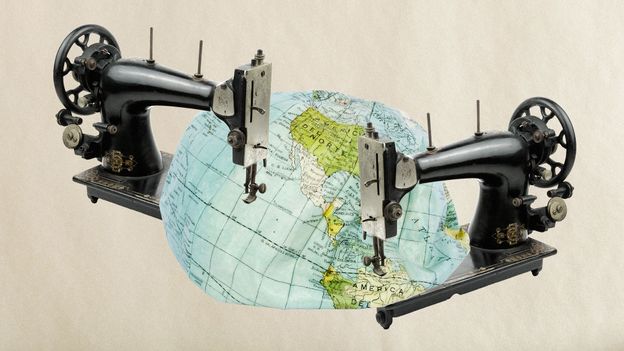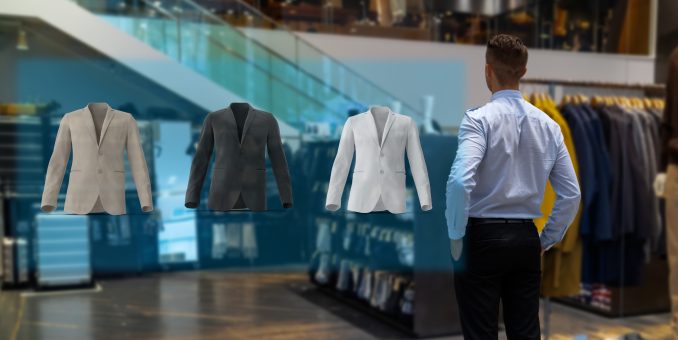CIRCULAR FASHION: THE FUTURE OF SUSTAINABLE STYLE
In an age defined by fast fashion, the term "circular fashion" is gaining traction, signaling a seismic shift in the industry ethos. As global awareness of the environmental repercussions of current fashion practices intensifies, consumers and brands are being driven towards a sustainable approach that extends the life cycle of clothing, reduces waste, and creates a more ethical production loop.
The core concept of circular fashion rests on the principles of designing out waste, keeping materials in use, and regenerating natural systems. It's a transformative idea that could redefine our relationship with clothes. But what does it mean in practical terms, and how are fashion brands, large and small, integrating these principles into their operations?
Firstly, circular fashion encourages the design of garments that are more durable and can be easily repaired, repurposed, or recycled at the end of their lifespans. This is in stark contrast to the disposable mindset that dominates the current fast fashion market, where items are quickly discarded and replaced. As such, the focus shifts to quality over quantity, investing in pieces that can stand the test of time both in style and durability.
One of the early adopters of this model is Patagonia, which has built a robust program around repair, take-back, and reuse of their clothing. They encourage customers to buy less and to choose well. This is not just a call for quality, but also for customers to enter a new pact with their garments, to care for them, repair them, and eventually return them so they can be spun into new threads, quite literally.
Another facet of circular fashion is the sourcing of materials. The search for renewable materials, that either biodegrade or can be completely recycled, is paramount. Innovations such as Piñatex, made from pineapple leaf fibers, or Mylo, a leather-like material derived from fungi, are paving the way for a future where fashion does not depend on finite resources or materials that leave a permanent environmental scar.
Brands are also exploring the rental market as a venue for circularity. Rent the Runway, a service that allows customers to rent designer dresses for a fraction of the retail price, extends the lifecycle of garments and satisfies the modern consumer's desire for newness, all while curtailing the sheer volume of clothing produced.
Despite the promise of circularity, however, significant challenges remain. The existing global textile recycling infrastructure is limited, struggling to separate blended fibers and dyes or to handle the sheer volume of waste. While the technology to recycle textiles does exist, it’s not yet at a scale or efficiency to handle the global output of discarded garments.
Furthermore, consumer behavior poses a substantial barrier. The allure of cheap, trendy clothes is difficult to resist, and the convenience of disposing of the unwanted items compounds the problem. It requires a cultural shift, one where the value of clothes is reconsidered, and their lifecycle is extended through sharing, swapping, and thrifting.
Education is also crucial. Designers and manufacturers need to be schooled in circular principles from the ground up. Schools like the London College of Fashion are now offering courses on sustainable fashion, teaching the next generation of designers the importance of designing with the end in mind.
Finally, transparency along the supply chain is essential. With blockchain and other tracking technologies, brands are starting to provide customers with a roadmap of their products' journey. This is not solely for consumer engagement but also for accountability. By making the supply chain visible, brands can ensure ethical sourcing and production methods, and consumers can make informed choices.
As we move forward, circular fashion is not just a trend, it’s a necessity. The industry cannot continue on a path of unchecked production and disposal. The circular model provides a blueprint for sustainable style that balances our desire for creativity and expression with the needs of the planet. But turning this vision into widespread reality will require collective effort: from brands, designers, manufacturers, and most importantly, consumers.
In transforming our approach to fashion, we'll not only be redefining style but also our responsibility to the future of our environment. The question that lingers is, will the industry and consumers alike rise to meet the challenge, or will the circular fashion movement remain a niche in a world of linear consumption? Time will tell, but the seeds of change are undoubtedly sown.
Stay tuned for the next segment of this article where we'll explore case studies of brands that are successfully implementing circular fashion principles, delve into the technological advancements propelling the industry forward, and analyze consumer attitudes and their evolving role in the circular fashion ecosystem.### Pioneers at the Helm of Circular Fashion
As the conversation surrounding circular fashion evolves, it's important to spotlight the change-makers who are redefining the industry. These pioneers are demonstrating that circular principles are not only viable but can also drive innovation and resonate with the conscious consumer.
Stella McCartney
, a long-time advocate of sustainable fashion, has been one of the frontrunners in integrating circular design into her collections. Her brand’s ethos is built on the belief that fashion should be both luxurious and responsible. McCartney’s collections frequently feature organic cotton, recyclable materials, and vegetarian leather, challenging the norms of luxury fashion. Her commitment extends to the production process, using renewable energy for its stores and offices as part of a broader commitment to environmental stewardship.Yet, the journey towards circularity is not limited to high-end fashion labels. Swedish retail giant
H&M
has been involved in efforts to close the material loop. Their garment collecting initiative allows shoppers to drop off unwanted clothes (from any brand) at H&M stores worldwide, rewarding them with a discount on their next purchase. These clothes are then sorted for reuse or recycling in various projects. H&M also launched its Conscious Collection, which uses sustainable materials like Tencel and recycled polyester, illustrating that circular fashion can have mass-market appeal.Adidas
, in collaboration with Parley for the Oceans, has initiated a line of shoes made from recycled ocean plastic. This initiative doesn't just put plastic waste to good use it also raises awareness about marine pollution. With millions of pairs sold, Adidas demonstrates that circular products can achieve commercial success while advancing sustainability.On the technology front, innovations are accelerating. Companies such as
Worn Again Technologies
are working on textile-to-textile recycling processes capable of separating, decontaminating, and extracting polyester and cotton from old or end-of-use textiles and clothing. This technology holds the promise of a true closed-loop solution for textile fibers.Digital platforms, too, are fostering circularity within the fashion ecosystem.
The RealReal
andVestiaire Collective
are luxury consignment websites that offer a marketplace for pre-owned designer fashion. Their success is indicative of a growing trend towards the circular model, where ownership is less important than access and use.The conversation around circular fashion is also broadening to include the concept of a product-as-a-service (PaaS). Dutch company
MUD Jeans
operates with a leasing model for its sustainable denim jeans. Customers pay a monthly fee to wear the jeans and, after a year, can either keep, swap, or return them. This model promotes long-term use and ensures that the materials are ultimately returned to the manufacturer, where they can be recycled into new products.Empowerment and Education
: As crucial as it is for brands to steer towards circularity, educating and empowering consumers to engage with sustainable practices is equally vital. Several NGOs and initiatives, like Fashion Revolution and the Clean Clothes Campaign, work to raise awareness and push for transparency and sustainability within the fashion industry. They empower consumers to ask brands, "Who made my clothes?", and to advocate for better conditions throughout the supply chain.Consumer Shift
: Attitudes toward fashion consumption are also witnessing a shift. The success of initiatives like the '30 wears campaign', which urges consumers to consider whether they will wear an item a minimum of 30 times before purchasing, reflects a growing consumer commitment to sustainable fashion. Additionally, the normalization of thrifting and vintage shopping as fashionable alternatives is a testament to the shifting attitudes towards consumption and reuse.It is clear that for circular fashion to become the standard, it must be a collective endeavor between brands, consumers, innovators, and policymakers. Legislation and regulations play a significant role in either restricting or promoting circular practices. Recently, countries such as France have passed laws to curb the destruction of unsold and returned garments, compelling companies to find sustainable ways to dispose of their unsold inventory.
In conclusion, the fashion industry stands at a pivotal point in its evolution. The circular fashion model presents a roadmap towards a sustainable future that harmonizes economic activity with ecological integrity. Innovative designers, pioneering brands, and new technologies are already forging ahead on this path, providing inspirational templates for change. Consumer education and shifts in behavior are catching up, gradually making circular fashion a widespread reality.
As these breakthroughs gain momentum, the question is not whether circular fashion will become the norm, but how quickly and effectively the industry as a whole will adapt to this paradigm. The next several years will be crucial in cementing the principles of circularity in fashion and ensuring that the ripples of today grow into the waves of tomorrow, changing the landscape of fashion forever.























Comments